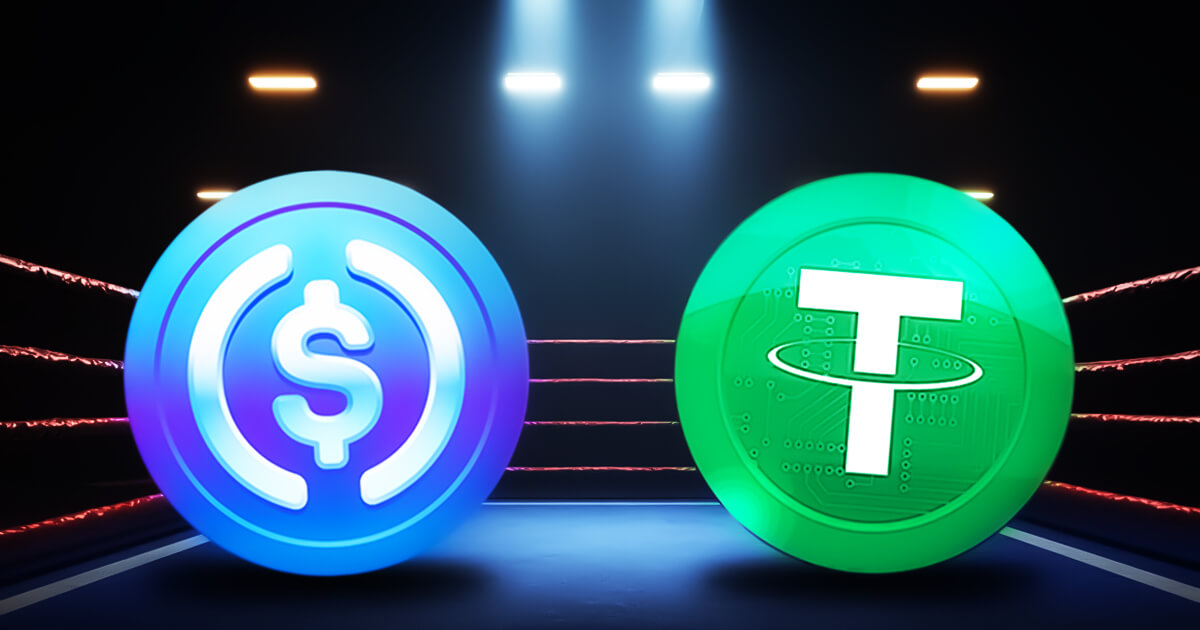Stablecoins like USDT and USDC are shining stars of digital finance. Their stability is due to their 1:1 peg to the US dollar. As a result, their use for everyday transactions and overall acceptance are increasing quickly worldwide. In Singapore, for example, the stablecoin payment value reached $1 billion in the second quarter of the year.
But one thing leaves people a little confused: USDT or USDC? They indeed share the same purpose and seem very equal, but they are, in fact, quite different. So, let’s delve into it.
USDT and USDC: What Are the Key Differences?
Transparency is where I believe USDC stands out. It has earned a reputation for its thorough measures to maintain this quality. Circle, the issuer of USDC, provides monthly attestation reports conducted by independent accounting firms. This strengthens user trust and regulatory acceptance. In contrast, the transparency practices of Tether, the issuer of USDT, have been a point of contention, even though there is no evidence to support such sentiments. Tether asserts that each USDT token, just like USDC, is backed by reserves equal to its supply and now offers quarterly reports to improve transparency.
When it comes to regulatory compliance, I believe USDC is again ‘winning,’ especially for institutions and within traditional financial systems. Circle stores its reserves in regulated US financial institutions and sticks to strict Know Your Customer (KYC) and Anti-Money Laundering (AML) guidelines. Tether’s regulatory journey has been, unfortunately, more complex. And again, while they implemented compliance improvements, people find Tether’s regulatory approach not yet very transparent, but, as was said earlier, there is no proven evidence to accuse them of violating the AML guidelines. Moreover, they have already strongly denied these allegations, and most importantly, they have a strong record of working closely with law enforcement.
However, USDT has a big advantage in its high liquidity and extensive adoption. USDT has been around since 2014, so it is deeply ingrained in the crypto ecosystem. USDT is available on almost every exchange and frequently used in trading pairs, which makes it highly liquid and easy to access for most traders. It is the most traded stablecoin by volume due to these factors. Interestingly, its widespread adoption is highly connected with USDC’s decision to exit TRON, largely perceived as related to AML risks. This prompted USDC’s users seeking low-cost transactions to shift to USDT on TRON. USDC’s cautious stance on, as they consider, risky networks has also led TON to partner with USDT instead, contributing to USDC’s comparatively slower growth in market share and adoption.
Transaction fees depend on the blockchain network on which the stablecoins are used. The fastest and most cost-effective ones are Solana and Algorand. Solana’s algorithm provides high-speed transactions of 1,504 per second with extremely low fees of 0.000014 SOL ($0.00189), while Algorand ensures secure and rapid processing with fees as low as 0.001 ALGO ($0.0001).
The Increasing Popularity of Stablecoins
The popularity of stablecoins, particularly USDT and USDC, has surged partly due to tightening banking regulations. Traditional banks tightened compliance standards under Basel II and III, which pushed some companies toward alternatives like stablecoins for transactional efficiency and reduced risk. Just last year, reports highlighted that USDT transactions, by both volume and count, had outpaced those of traditional payment giants like Visa and Mastercard. This made these companies, especially Visa, turn toward crypto and integrate stablecoins.
This points to a critical insight: while Tether and Circle issue centralized stablecoins, they function atop decentralized networks, combining regulatory compliance with blockchain’s inherent efficiency. USDT and USDC are, therefore, stable yet carry an underlying risk of centralized control. Not many people understand it, but I find it very important.
Basel IV discussions that are around lately are also already impacting the sector. USDT’s capitalization reached around $120 billion, and USDC at $34 billion. Notably, around 80% of USDT’s reserves are invested in US treasury bills. It generates significant returns due to rising interest rates, which, for example, reached 6–7% last year. In 2023 alone, USDT earned $5.5 billion in interest from these investments. It highlights the economic impact of stablecoin assets on crypto. However, this setup also involves an element of US oversight, as Tether holds such a significant portion of US assets.
Choose based on your needs
USDT and USDC each play crucial roles in the crypto ecosystem, catering to different user needs. Which one to choose? The answer fully depends on the individual user’s goals. Traders needing seamless market access and flexibility across blockchains may lean toward USDT. Users prioritizing security, compliance, and strong backing will likely find USDC a more fitting option.
Stablecoins are a fundamental part of the financial world and will only increase in popularity. As they offer the benefits of both cryptocurrency and TradFi, they are open to all kinds of users.
[Editor’s Note: Tether CEO Paolo Ardoino exclusively told CryptoSlate earlier this year that the company has repeatedly attempted to have its audits carried out by one of the ‘Big 4’ US accounting firms but has faced roadblocks stemming from Senator Warren’s influence. Tether asserts that it is using the most prominent accounting firm available and continues to seek an even more esteemed partner.]




